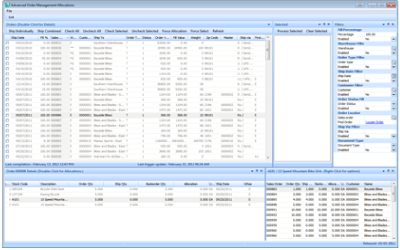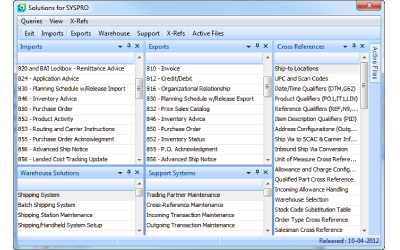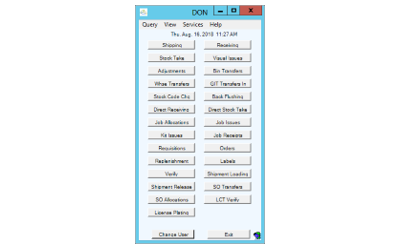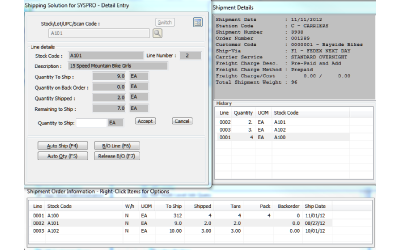|
Each token can be enhanced/modified with one or more of the following attributes:
Some of the attributes can be added to the end of the field name by using a specific separator character. If you wish numbers to be zero filled, place a "Z" before the length number. To set the index use INDEX={index number} (Alternative to "/") To set the maximum length use LENGTH={length} (Alternative to ":") To set the starting position use START={starting characters} (Alternative to "~") To indicate the item line number for the CFF token or force a unique token for Bartender use MARK={number} or #{Number} To force the case to upper or lower use CASE={U or L} To take information from the end use RIGHT={length} For Example: Date Formatting:
Examples: |
|
|
Any number within <> is a numeric value token. The value of the number will be multiplied by the value of the [MULT] command. |
|
|
Any question marks "?" will be replaced with the station code |
 Cadacus, Inc.
Solutions for SysPro
Cadacus, Inc.
Solutions for SysPro

Advanced Order Management
Are you or your customers tired of trying to determine which sales orders to ship and how best to allocate backorders? Advanced Order Management gives an overall view of your shipping situation, ranking orders by fill rate, ship date, customer, and a variety of other qualifications. Releasing blocks of orders and backorders is as easy as two clicks! Contact your dealer for more information and to arrange a demo.

Electronic Data Interchange
The SYSPRO EDI solution handles all of your standards-based electronic document needs. Contact your dealer for more information and to arrange a demo.

Warehouse Management System
Our Handheld WMS solution's capabilities are growing every day, covering all areas of the warehouse and more. Contact your dealer for more information and to arrange a demo.

Shipping Solution for SYSPRO
The SYSPRO Shipping Solution and Freight Calculator deals with getting your shipments out the door fast! Customer compliance labels, packing slips, BOL's for LTL shipments and direct printing of UPS, FedEx and USPS labels are just a few of the many features. Contact your dealer for more information and to arrange a demo.
 CADACUS, INC.
CADACUS, INC.
SOLUTIONS FOR SYSPRO™
Providing quality solutions to the SYSPRO™ user community since 1991!
Tutorials
- Workflow
- Shipping Solution
- Handheld WMS Solution
- Advanced Order Management (AOM)
- Shipment Import Overview and XML Format
- Business Objects
- Installation / Upgrades
Current Releases
SYSPRO™ : October 5, 2023
Handheld : October 5, 2023